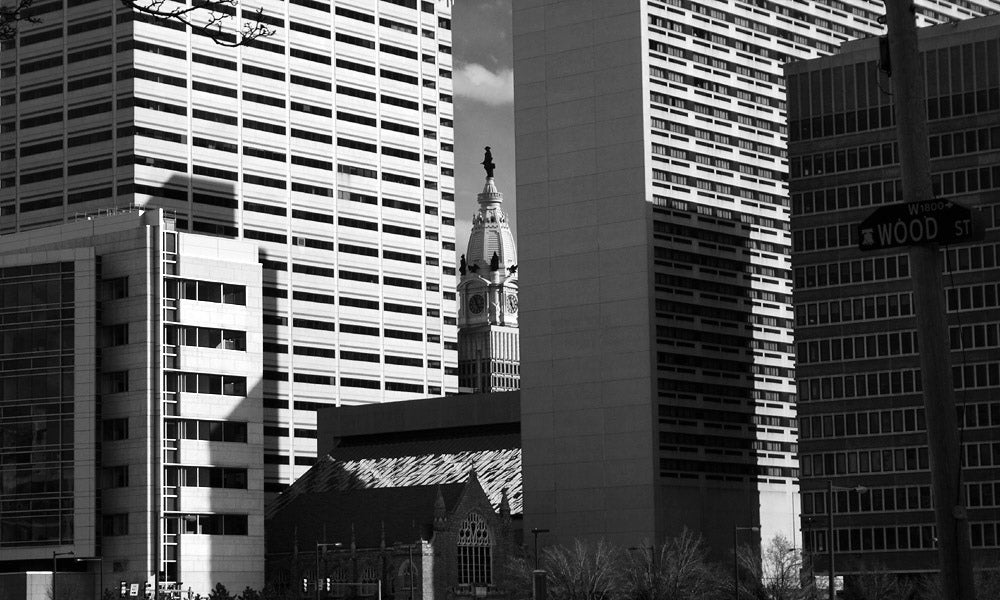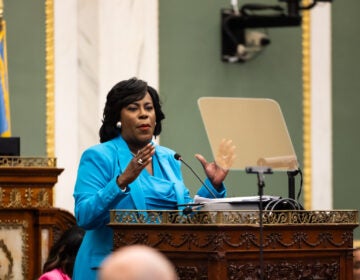Author Alan Mallach will appear in conversation with PlanPhilly’s Jake Blumgart from 5:30 to 7:30 p.m. June 26 at Pipeline Philly, 30 S. 15th St.
I recently published a book called “The Divided City: Poverty and Prosperity in Urban America,” which looks at the nation’s older cities, places like Philadelphia, Baltimore or St Louis. In a nutshell, the book describes how these cities are experiencing a revival that would have been impossible even to imagine a few decades ago, but at the same time, vast parts of these cities are at best treading water and often declining further, seeing little or no benefit from the revival taking place in downtowns, and in the neighborhoods around those downtowns, the global universities and medical centers like Johns Hopkins and the Cleveland Clinic.
This is the Philadelphia story, too. Philadelphia, in many ways, is on a roll. You don’t need statistics to feel the vibe as you walk around Center City, around Penn and Drexel, or in neighborhoods like Northern Liberties, Fishtown or Fairmount, where I used to live, but a few numbers might be useful. Since 2002, the city has grown over 57,000 jobs, a better than 10 percent increase. The number of people 25 to 34 with college degrees living in Philadelphia has more than doubled since 2000, going from 60,000 to more than 130,000 – one out of every nine city residents over the age of 18. Over the last three years, Philadelphia has issued permits for over 10,000 new housing units, figures unprecedented in recent memory. For someone like me who loves the city, it’s an exhilarating experience.
In light of the city’s revival, it’s not surprising that the word that seems to be on everyone’s tongue in Philadelphia these days is the G word – gentrification. From some of the media coverage, one might get the impression that Philadelphia is another Washington, D.C., or Seattle, cities where gentrification is like a neighborhood change steamroller. Yet as a few people, including the authors of a 2016 report from the Pew Charitable Trusts, have already pointed out, that’s not actually the case. Many more Philadelphia neighborhoods – including many of its middle neighborhoods, the working- and middle-class neighborhoods that have historically been the city’s backbone – are in decline, including a disproportionate share of the city’s predominately black middle neighborhoods.
One reason for this is that Philadelphia is losing its black middle class. From 2000 to 2016, the total number of black households in Philadelphia stayed roughly the same; but during that period the city lost over 9,000 black middle-class families – families earning $50,000 or more in 2000 dollars, adjusted for inflation, or roughly one out of every six such families. While in 2000, the median black household earned 71 percent of what the median white household earned, today it’s 55 percent. Losing these families is bad for the city, not only in terms of their resources and purchasing power, but as much in terms of their loss to the city’s civic and political leadership.
Some more statistics: In 2000, there were 53 census tracts in Philadelphia – or about one out of every seven – that were both middle-income (relative to the city as a whole) and more than 50 percent African-American. By 2016, half of those tracts were sharply in decline, with lower incomes, more poverty, fewer homeowners, and more vacant houses. Five had seen incomes rise significantly, while the rest stayed more or less stable. The average majority-black middle-income neighborhood lost 19 percent in real income (adjusted for inflation) from 2000 to 2016. By contrast, among predominately white middle neighborhoods, only about 20 percent had declined, and one-third moved up. Of 79 predominately black lower-income census tracts, only 3 had moved up to the point where they were upper-income tracts; almost all were still stuck in concentrated poverty.
A lot of things have contributed to this outcome, including the subprime frenzy of the early 2000s, and the subsequent foreclosure crisis. A map of subprime lending from those years shows the greatest concentrations in predominately African-American areas in North Philadelphia, West and Southwest Philadelphia, and Germantown.
Another piece of the picture is that although Philadelphia is growing jobs, few residents are benefiting. The city added 57,000 jobs from 2002 to 2015, but if you check how many more jobs in the city are held by city residents, the number is only 700 – only a little more than 1 percent! By 2015, over 56,000 more commuters were coming into Philadelphia every day to work than in 2002.
Philadelphia is becoming an increasingly polarized city, racially, economically and spatially.
Million-dollar homes are no longer a rarity in Center City, but homes in large parts of North and West Philadelphia sell for pennies.
All of this doesn’t mean that Philadelphia should ignore gentrification. It is a serious issue. Programs like the Long-Time Owner Occupants Program and the recent provision of additional dollars for the Basic Systems Repair Program will help keep a lot of homeowners in their homes, although the problems of renters may, sadly, continue to defy solution until the federal government provides enough resources so that all families who need them can get housing vouchers or the equivalent. It’s important to remember, though, that all neighborhoods – except perhaps for the most disinvested and most affluent – change, and that poverty, lack of opportunity, and neighborhood decline are blighting the lives of far more Philadelphians than gentrification, just as the problem of housing insecurity and evictions is first and foremost a problem of poverty, far more than a problem of gentrification.
Ultimately, if things are going to change, it has to be about opportunity. About enabling all of Philadelphia’s people to live in a safe, healthy neighborhood, to find and hold a decent job, and for all of the city’s children to get the education they need to succeed in life. That’s a tall order, but I refuse to accept that it’s not possible. And, whatever roles the state and federal government may ultimately play, they will never be the solution. The solution has to begin at home.







